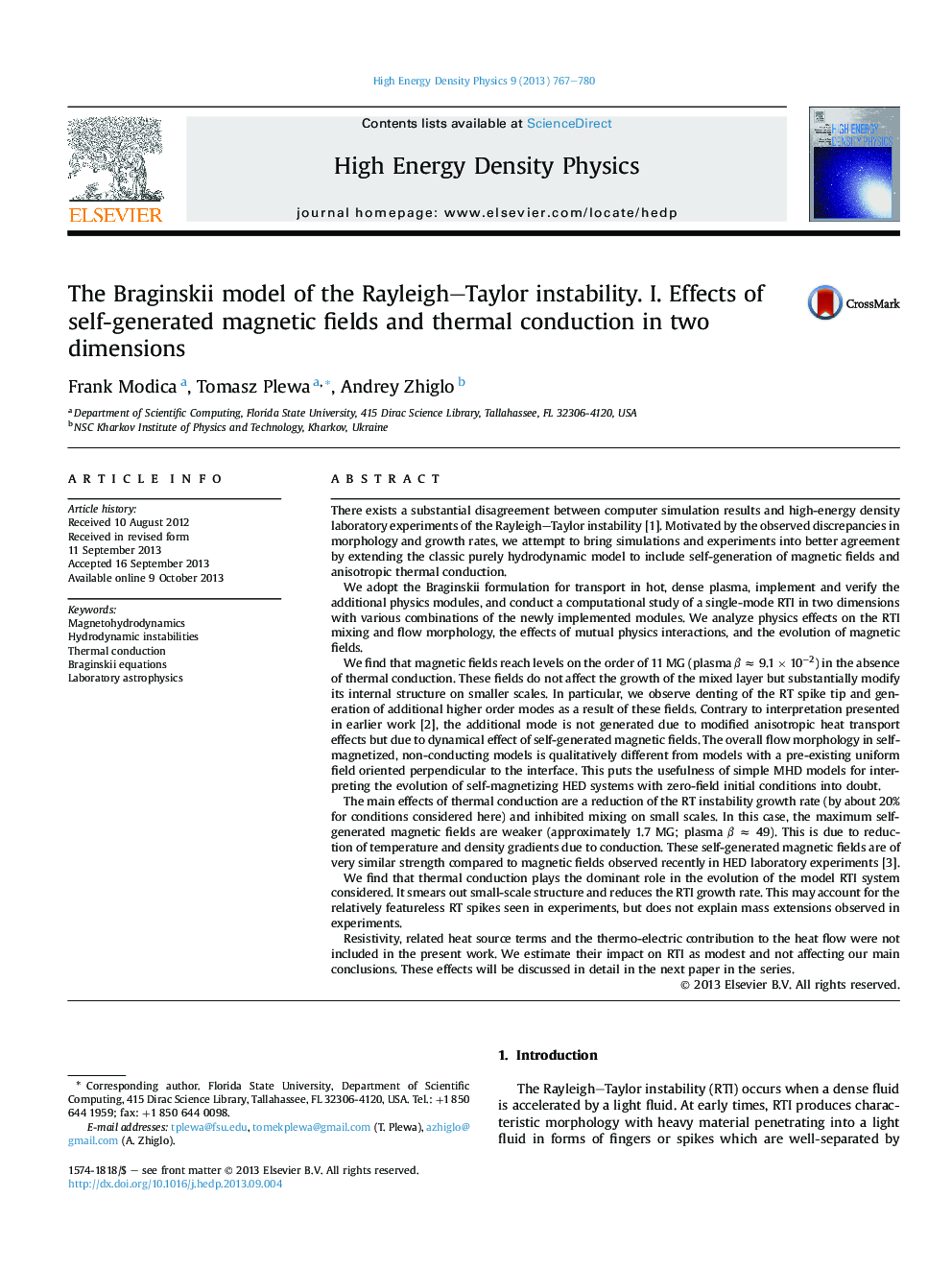| کد مقاله | کد نشریه | سال انتشار | مقاله انگلیسی | نسخه تمام متن |
|---|---|---|---|---|
| 1772417 | 1021045 | 2013 | 14 صفحه PDF | دانلود رایگان |

There exists a substantial disagreement between computer simulation results and high-energy density laboratory experiments of the Rayleigh–Taylor instability [1]. Motivated by the observed discrepancies in morphology and growth rates, we attempt to bring simulations and experiments into better agreement by extending the classic purely hydrodynamic model to include self-generation of magnetic fields and anisotropic thermal conduction.We adopt the Braginskii formulation for transport in hot, dense plasma, implement and verify the additional physics modules, and conduct a computational study of a single-mode RTI in two dimensions with various combinations of the newly implemented modules. We analyze physics effects on the RTI mixing and flow morphology, the effects of mutual physics interactions, and the evolution of magnetic fields.We find that magnetic fields reach levels on the order of 11 MG (plasma β ≈ 9.1 × 10−2) in the absence of thermal conduction. These fields do not affect the growth of the mixed layer but substantially modify its internal structure on smaller scales. In particular, we observe denting of the RT spike tip and generation of additional higher order modes as a result of these fields. Contrary to interpretation presented in earlier work [2], the additional mode is not generated due to modified anisotropic heat transport effects but due to dynamical effect of self-generated magnetic fields. The overall flow morphology in self-magnetized, non-conducting models is qualitatively different from models with a pre-existing uniform field oriented perpendicular to the interface. This puts the usefulness of simple MHD models for interpreting the evolution of self-magnetizing HED systems with zero-field initial conditions into doubt.The main effects of thermal conduction are a reduction of the RT instability growth rate (by about 20% for conditions considered here) and inhibited mixing on small scales. In this case, the maximum self-generated magnetic fields are weaker (approximately 1.7 MG; plasma β ≈ 49). This is due to reduction of temperature and density gradients due to conduction. These self-generated magnetic fields are of very similar strength compared to magnetic fields observed recently in HED laboratory experiments [3].We find that thermal conduction plays the dominant role in the evolution of the model RTI system considered. It smears out small-scale structure and reduces the RTI growth rate. This may account for the relatively featureless RT spikes seen in experiments, but does not explain mass extensions observed in experiments.Resistivity, related heat source terms and the thermo-electric contribution to the heat flow were not included in the present work. We estimate their impact on RTI as modest and not affecting our main conclusions. These effects will be discussed in detail in the next paper in the series.
Journal: High Energy Density Physics - Volume 9, Issue 4, December 2013, Pages 767–780